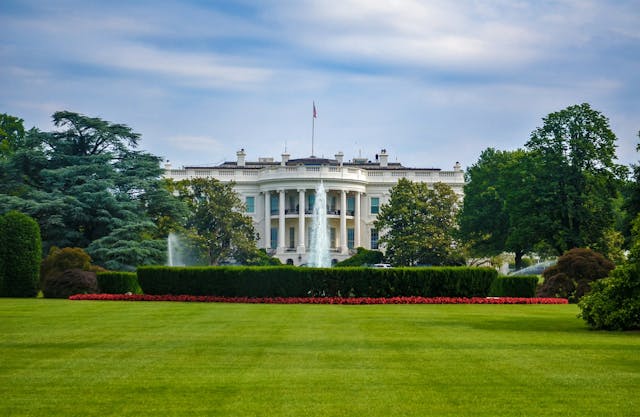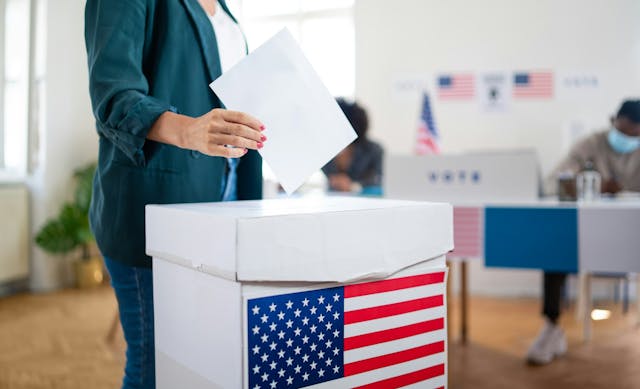Closed Primaries: The Parties' Most Effective Tool to Control (And Suppress) The Vote

2020 is already a year to remember – a world-wide pandemic, militant Black-led protests sparked by the murder of George Floyd by a white Minneapolis police officer, and a presidential election. It is fair to ask what the election has to do with the other two. Will it bring anything more than efforts by both major parties and their less than inspiring candidates to use these devastating events to their advantage?
Those who call themselves reformers cannot ignore this question. At a minimum, we need to demonstrate that political reform can impact the larger picture. Would a more functional political system have produced a better response to the pandemic? Would George Floyd have been the victim of such blatant police brutality if our democracy was “of the people, by the people and for the people”? Elements of the political reform movement have, understandably, focused on partisan control of primary elections as a key element of the struggle.
Throughout our history, the fight for voting rights has been linked to the struggle of African-Americans for citizenship. The end of slavery put the issue of suffrage on the political agenda. The Fifteenth Amendment to the U.S. Constitution was ratified in 1870:
Section 1.
The right of citizens of the United States to vote shall not be denied or abridged by the United States or by any State on account of race, color, or previous condition of servitude--
Section 2.
The Congress shall have the power to enforce this article by appropriate legislation.
The decades that followed saw various stratagems for impeding Black participation in the electoral process, particularly in the southern states – poll taxes, literacy tests, outright intimidation. The“white primary” was the most widespread device for maintaining white control over the electoral process.
The Democratic Party was the dominant political organization in the states of the former confederacy. If you controlled the outcome of the Democratic primary you controlled who held public office and who exercised political power. That meant making sure that the primary could not be won by a coalition of Blacks and progressive whites. What better way to do that than to bar Blacks, who by 1940 were approximately 31 percent of the population, from participating?
The Party took the position, supported by the Courts, that it was a private association that could control who could join. The white primary cases of the 1940’s challenged this. It was critical to attack, head on, the position that the parties were private.
These efforts are summarized in “Let All Voters Vote: Independents and The Expansion of Voting Rights in The United States.” Gruber, Hardy, Kresky Touro L. Rev. Vol. 35, no. 2 (2019):
“Nine years later in Smith v. Allwright, the third of the White Primary cases, the Court found state action in a primary election conducted by a private 'voluntary association' when the election process included duties imposed upon the party by state law. The fact that a state convention created the discriminatory nature of the electoral process at issue was held to be irrelevant."
Id., at 671.
Efforts to open and democratize the political process followed the political upheaval of the sixties. The 1965 Voting Rights Act, signed into law by Democratic President Lyndon B. Johnson, required that changes in the electoral process in the southern states be cleared by the U.S. Justice Department before taking effect.
The Democratic Party, already the party most African-Americans identified with in the northern states, became the party that spoke for Blacks in the south. Many whites fled to the Republican Party, and the two major parties competed for hegemony in the southern states.
Both parties, north and south, cooperated in a system of gerrymandering that created safe districts where African Americans could be elected to public office at the local, state, and federal level. However, these “Black electeds” were a minority in most legislatures, unable to drive the agenda. It has become clear that empowerment, from the bottom up, is inconsistent with bipartisan control of politics and government.
The vehicle to break partisan control was the open primary, the most radical example being the “Top-Two” nonpartisan primary. That system was adopted in California, Washington and a variant in Louisiana. Under “Top-Two,” all voters vote in a nonpartisan first round with candidates permitted to list their party preference. The top two go on to the general election ballot
"Top-Two" came into being after the Supreme Court struck down California’s “blanket primary,” adopted by referendum in 1996. It was a system that maintained partisan registration, but allowed voters to go to the polls on primary election day and vote for any office in any party’s primary. Thus, a Democrat could vote in the Democratic Party primary for governor and in the Republican Party primary for attorney general.
The two major and two minor parties went to court claiming the blanket primary violated their freedom of association by allowing “cross-over” voters, members of other parties and “decline to state” (independent) voters to participate in their primaries, and thereby influence the nomination of party candidates. And, understandably, they challenged the proposition established in the white primary cases that the primaries were public functions, arguing that the white primary cases were an exception designed to deal with race discrimination, and that in other respects party primaries were more private than public in nature.
In California Democratic Party v. Jones, 530 U.S. 567, 574-75 (2000), Justice Scalia wrote, for the majority:
That is to say, a corollary of the right to associate is the right not to associate. "'Freedom of association would prove an empty guarantee if associations could not limit control over their decisions to those who share the interests and persuasions that underlie the association's being.'"
In Washington State Grange v. Washington State Republican Party, 552 U.S. 442 (2008), the Supreme Court upheld Top-Two on the grounds that it wasn’t a party primary.
We are at a legal stalemate. If a state elects to close its primaries, no court so far has forced it to open; if a state chooses to open its primaries, a court will respect that decision. The next front in the legal battle may be to challenge public funding of closed primaries, responding to the cry of independent voters, “If we can’t vote in these primaries, why should we pay for them with our tax dollars?”



